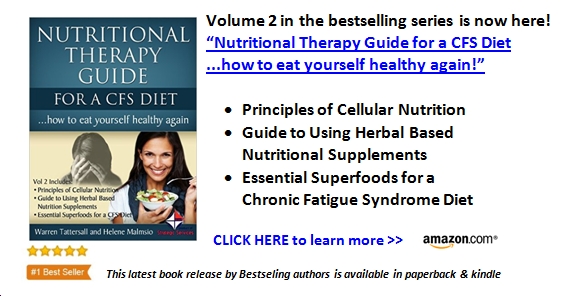| Back to Back Issues Page |
 |
|
Low Carb Diets" - Your Health Success ezine May 04, 2021 |
| Hi there
I hope you enjoy the e-zine as much as I do writing it. Index: Optimum Health Tip:3 Meal Prep Hacks to Help Make It Easy on You
Meal prepping is an excellent way to eat healthier and lose weight. Saving time is also a perk of meal prepping, and that’s something that appeals to everyone.
2. Use a crock pot to save time and effort. 3. Plan for snacks. Also, it’s okay to repeat meals
during the days or weeks ahead. Enjoyment of your food is key here - and when you love a recipe or enjoy eating leftovers, it’s perfectly okay to make up a batch and serve it later on during the week. Motivating Quotes:"When I woke up this morning my girlfriend asked me, 'Did you sleep good?' I said, 'No, I made a few mistakes.'" - Steven Wright "I don't have an hourglass figure. I have an hour and a half. I have a little too much time on my ass." " Honesty is the first chapter in the book of Wisdom." REPORT: "Guide To Successful Low Carb Diets"
An issue that many people face when it comes to eating is eating too many carbs. While carbs are necessary for us to have and make energy, there is such a thing as too many carbs. Typically, we get our excess carbs in the form of sugars from things such as sodas, candies, and baked goods. You can also find excess carbs in foods such as pasta and bread. Basic Principles of a Low Carb Diet Low carb diets work on the principle that if you cut back on your intake of carbs, your body will only use what it has and then switch to fat as an alternate fuel source, helping your body burn fat and lose weight. Unlike some diets, this has a fair amount of scientific backing - your body can use all sorts of things as fuel, fat included. It just happens to use carbs the most. If it doesn’t have many carbs to use, it will end up using your fat. There are multiple variations of low carb diets, and each one may work better or worse for you depending on a few major factors. The variations range from 150 carbs max per day to under 20 carbs max per day. The first kind of low carb diet is the moderate carb version, in which you can allow yourself between 100 and 150 carbs per day. This version is good for both beginners who are new to the idea of cutting back on carbs as well as very active people who need those carbs for their workouts. Under 100 carbs per day is generally considered low carb, and this is one of the most common variations that you’ll see. It’s low enough that most people will use the carbs up during the day but not so low that you’ll be short on energy. Once you get under 20 carbs per day, you’re in what’s known as a ketosis, or keto diet. Ketosis is the name of the actual process in your body in
which your cells switch from using carbs to fats for fuel sources. While ketosis will likely occur within all of the low carb diets, the keto diet goes so low that it makes you rely on ketosis way more for energy. Ketosis is not particularly recommended for beginners, because it can be extremely difficult to consume less than 20 carbs per day unless you’re fairly experienced and have a good sense of your diet plan. If you are a beginner, it would be more beneficial to start at either the moderate or low carb diet and stick with it for awhile. Once you’ve gotten acclimated to the low carb life, you can slowly get closer to ketosis by cutting down in increments, such as 75 and 50 carbs per day. Who a Low Carb Diet Works Best For Low carb diets work for a pretty wide range of people, because the concept is so simple and effective, yet malleable enough to be adjusted
for different needs. For example, you can do one version of low carb if you’re working out every day for many hours, or another version if you’re fairly inactive or sitting down working most of the day. Low carb diets are primarily for losing weight, so if you’re looking for a diet that will help you gain, this wouldn’t be it. However, most people look at a diet to help them lose, so this is definitely a viable option for most people. The moderate carb diet will work best for two groups of people - those who are highly active and those who are brand new to the low carb diet. Those who are very active will need those carbs to be able to work out, while those who are new will need to ease themselves into the diet to make it a smooth transition. Once you spend enough time in the moderate carb diet that you feel somewhat
comfortable with the concept, you can move on to the low carb diet. Again, this transition should be done somewhat gradually, because sudden changes in dietary habits can make diets difficult for people to follow. If you’re remaining active, somewhere in the low carb range would be the ideal place to be, since you’ll be using those carbs for your exercise. Ketosis can be difficult, so you should make sure you’re well acquainted with the low carb diet before making that switch. The low carb diet is good for a wide range of people because you don’t really need to plan out meals very much, unless you’re doing ketosis. As long as you check the nutrition facts on the items you’re eating or drinking beforehand, and you count them throughout the day, you’ll still be following the diet. If you’re more
prone to snacking, then you may still be able to pull off a low carb diet. If you only stock your shelves with low to no carb snacks, then you’ll be able to still fit your daily carb limit. If you continue to buy things like chips and sodas and snack on them, then your low carb diet will likely fail. As long as you’re able to exercise self-restraint and only get low carb foods, then you’ll be able to succeed in the low carb diet. That’s not to say that you need to plan out every meal for this diet. If you’re okay with just keeping track throughout the day of how many carbs you’ve had, you’ll still be fine. Planning makes it easier, but if you work better with just going on the fly, then you’ll still be fine. How
to Get Prepared for a Low Carb Diet To get prepared for a low carb diet, you’re going to need to buy all of the right foods. Some foods should be avoided outright because they just contain too many carbs for you to consume with not enough calories to balance it out. For example, anything made with sugar should be avoided. This includes sodas, sweets, and juice. These foods often contain absurd amounts of carbs, even taking up an entire day’s worth of carbs. You should also avoid things like high carb bread, pasta, and products that claim to be low fat. Instead, opt for natural foods. For example, you can have grilled chicken on one occasion and then have seared beef another. Be careful, though, because not all ways of preparing meat are okay for low carb. Fried,
breaded meats are particularly bad for you, and you can’t really have them in a low carb diet. Just because it’s made from meat doesn’t necessarily mean it’s healthy for you. If you’re feeling like snacking, low carb vegetables are a fantastic alternative to things like chips. Sample a few different vegetables and find out which ones you like. Common choices include broccoli and cucumbers. Vegetables are typically low calorie and low carb, so you can snack on them without breaking your diet’s rules. Be sure not to take the unhealthy route to vegetables and pair them with unhealthy sides. Avoid high carb dips to go along with your vegetables, because then you’re just undoing the whole purpose of eating low carb foods in the first place. Beer is
typically extremely high in carbs, and if you have more than one beer, you’re going to find yourself breaking your carb limits very quickly. While it would probably be best to not drink them at all, if you’re out on the town, you can still have drinks while following your diet. By gathering all of the right foods, you’ll be prepared to embark on your low carb diet journey. If you still have a bunch of high carb food from previous grocery trips in your cabinets, you can either donate it to your local food bank or throw it out. If you have any left, you may be tempted to eat it, which could lead to you breaking your diet.
Recommendations & Sponsors:Our Sponsors and Affiliates are what keep this newsletter and our website self help books, articles and resources free to you, so we appreciate your support when purchasing from our sponsors.DO YOU HAVE CHRONIC FATIGUE? There is help and NEW HOPE for you! Our unique combination of natural ingredients is proven to help beat CFS Did you know that Chronic Fatigue Syndrome can be as disabling as Multiple Sclerosis, Lupus, Rheumatoid Arthritis, congestive Heart failure and similar chronic conditions? In 2012 I began co-writing a book about the CFS therapies that had worked for me and my clients. I'm proud to announce that the first book in our series became a Bestseller on Amazon, ranking #1 in the chronic fatigue syndrome category! Since then, I have published Volume 2 about our CFS Diet, to fully explain how your digestive system, using cellular nutrition and superfoods, along with herbal based nutrition, can help you to recover your energy and wellbeing too!  REPORT: "Low Carb Diets" continued:Sample Meal Plan for a Low Carb DietDepending on the type of low carb diet you’re doing, you’ll have pretty wildly different meal plans. What will end up working for a moderate carb diet won’t come close to working for a ketosis diet, and vice versa. For a moderate carb diet, there are some foods that you flat out won’t be able to have. For example, one cup of oats contains about 100 grams of carbs. While also high in protein, it would almost max out your carb limit in a single meal. Instead, you’re going to have to find low carb alternatives. Many foods that are low in carbs that work for this diet are high in fat. Most people associate fats with being terrible for you, when that’s not quite right. Look for foods with more unsaturated fats, like avocados – and try to avoid saturated fats if possible. Always, no matter what, avoid trans fats, which are the
worst type of fat for your body. For example, eggs are high in protein, moderate in fat, and very low in carbs. They can be prepared in a variety of ways and are pretty cheap. Pair them with some pan cooked meat like chicken or sausage and you have a pretty good breakfast. Salads with grilled chicken will be your best friend in a low carb diet. They’re easy to make, the ingredients are easy to get, and you can throw together just about anything to mix it up. You can mix various amounts of lettuce, spinach, cucumber, avocado, and any other vegetables you’d like for a very low carb lunch. If it fits within your carb limits you could add in some croutons, but if you’re doing ketosis this probably won’t fit in to your plan. You want to get your carbs
earlier in the day rather than later, so you’ll switch to fat as a fuel source sooner. By dinner time, you should have very few carbs left, if any. That doesn’t mean you can’t still have a great dinner. For dinner, you can always have a decent amount of meat, given that meat is very low in carbs. Meat by itself is boring, though – so add some vegetables like spinach, red bell peppers, or broccoli to the plate. You can have them raw or boil them if you’d prefer, as long as you don’t add anything dense in carbs. Chicken is one of the best options for low carb dinners because it’s high in protein, fairly low in fats, and devoid of any carbs - assuming it’s not fried or battered. If you prepare it by a method that doesn’t add any carbs - like grilling it or baking it, then you can have a pretty good amount of it, certainly enough to make you feel full. Depending on the diet you’re doing, you may be able to
factor in some more carbs at some part of the day, like a sauce on your chicken or some croutons in your salad. However, be sure to follow the serving size and track your carbs. Tips to Increase Success on a Low Carb Diet Many people aren’t used to a low carb diet, especially since carbs are found in so many foods that we eat almost daily in some settings. From the bread in sandwiches to pasta and sodas, they’re just about everywhere. However, there are a few tips that will make your entire transition into the low carb diet much smoother. Before you even begin the diet, start paying attention to the foods you eat and how many carbs you’re eating per day already. You may notice that it’s pretty high, especially compared to some diets like ketosis. Don’t let this discourage you - it will actually help you get into the groove of counting and keeping track of carbs. Speaking of which,
you’re going to need a way to keep track of your carbs easily. Depending on what works best for you, there are a few options to pick from. The most common one would be using a fitness progress app like MyFitnessPal. You can select premade foods or input your own, and depending on how much you tell it you had, it will keep track of the carbs, calories, and other macromolecules. Another good thing to do when you’re starting out your low carb diet is to slowly ease yourself into it. Rapid changes in diet almost never go well. Start off by doing the basic 150 grams of carbs per day diet, because this diet will be the most forgiving and the easiest to follow. Learn how to make food swaps, such as zucchini noodles instead of regular spaghetti. If you try to dive straight into ketosis from a high carb diet, you’ll probably experience sickness because your body will think something’s gone horribly wrong and
you’re not getting enough food. This is known as the keto flu and can be helped by sipping chicken broth. Ketosis should be reserved for people who are well versed in the low carb diet, and are ready to try taking it a step further. If you’re out shopping for your low carb foods and you get a craving for candy, make sure you choose sugar free candy and calculate the net carbs, which remove the sugar alcohols from it. Try to stick with all natural ingredients. You don’t have to pay a bunch more and get all organic ingredients, just stick with things that aren’t processed, synthesized, or made in a factory - things like meats, fruits, vegetables, and nuts are all perfectly natural, and work well for your low carb diet. One way to stay on track with your diet is to prepare your meals well in advance. Calculating carbs can be tedious, so if you have premade meals that you can just heat up or have cold, then
it will make your diet much more enjoyable. Make sure when starting your low carb diet to only stock your shelves with foods that have little to no carbs. There’s no point in having things like sodas in your house if you’re not going to drink them on your diet, so you might as well not risk the temptation and clear them out. Any fad diet is likely to give you noticeable weight loss in the first few weeks. The secret is to get your weight to a sustainable level as to be able to keep it there. If you go with low carb then you need to ensure you have enough nutrition to keep your metabolism in balance. You can do that by keeping the food you eat in a healthy balance. If you find it difficult to sort through the issues of balancing diet while reducing carbs then I recommend you
Learn more about how to do that for your general health by reading this article: Nutrition for your Cells Just enter WT (in capitals)to open the page.

News!
For all the subscribers that don't want to talk to anyone, just want to buy their products direct, I'm creating these websites that process orders for you once you register with them. |
| Back to Back Issues Page |





 Hi,
Hi,

